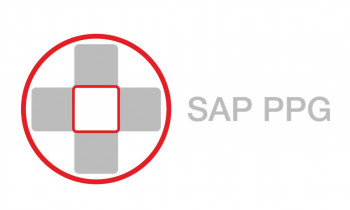23.08.2022
Integrated work preparation and BOM generation
BOMs and routings play a very important role in mapping the product life cycle in SAP.
A bill of material describes the product from the perspective of the components required for production. Routings answer the question of "How? How long? By whom?" within a process.

The influence on the process chain
If you look at the process chain backwards, the importance of integrated routing and BOM generation for work preparation becomes clear. This is because it usually deals with the generation of routings for the corresponding assembly stages.
What does this mean for the product?
In the SAP system, a product is created from the nesting of several assembly BOMs that result from the overall view of a multi-level product. If a product is mapped in a multi-level bill of material, each construction stage receives a consistent routing, which enables the production of the corresponding assembly stage. The work processes behind it can be reported back, among other things. This ensures traceability along the entire production line and it is always possible to see which stage of the production process the product is in.
If you look at the process chain starting with product design, the foundations for industrial engineering integration are already laid here. In the design phase, the product is first described and it is defined which information must be taken into account in work preparation. This could be tightening torques or tolerances, for example. In this way, content relevant to the work plan is already provided and anchored in the structure in the early phase of product development or in the change process within Industrial Engineering Integration. This information from the same data environment is also further detailed and utilised in work preparation.
Integrated product and process engineering with SAP PPG
BDF EXPERTS has developed SAP PPG for SAP's integrated product and process engineering. In the data world of structure objects and material plan items, it is possible to create structures generically. Using a planning environment in SAP PPG, BOMs and routings can be generated from the structural elements after the corresponding planning items have been filled with information. Filling can take place via CAD integration, for example for the entire product, or through direct modelling within the SAP PPG. The separation of design and production BOMs is also supported here and includes the generation of routings. SAP PPG makes it possible to plan the product within a structural environment and also to incorporate change processes without supplying direct or uncontrolled information to production. The individual structures are mapped by so-called nodes, which in turn consist of sub-structures - the material or document plan items. A material master is created from these material plan items at the desired time within a process (fully integrated) and the integration with industrial engineering is maintained.
Industrial engineering integration, coupled with BOMs integration, enables the user to plan and complete the necessary construction stages in detail in process phases before the material master or bill of material has been created. This also includes the levels required for production (M-BOM). In this way, work steps, production resources or corresponding documentation can be planned and used later in routing generation.
Once product creation or the product change process has been completed, the necessary SAP ERP bill of materials and the associated routing are generated for the assembly stages or for the entire product. Additional processes such as the integration of knowledge management can be used to ensure a high quality standard and clear and variant-rich routings and bills of materials.
Efficiency and quality - an issue for the present and the future
Efficiency and the expected quality standard in the generation of ERP-relevant master data is an ever-present issue. As master data is used from design to production and dispatch, unnecessarily or even incorrectly generated master data generates high process costs and lengthens process cycles. Master data must meet efficiency and quality requirements, especially due to the constant advance of digitalisation, so that the focus remains on value creation and product innovation.






